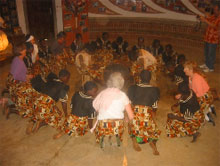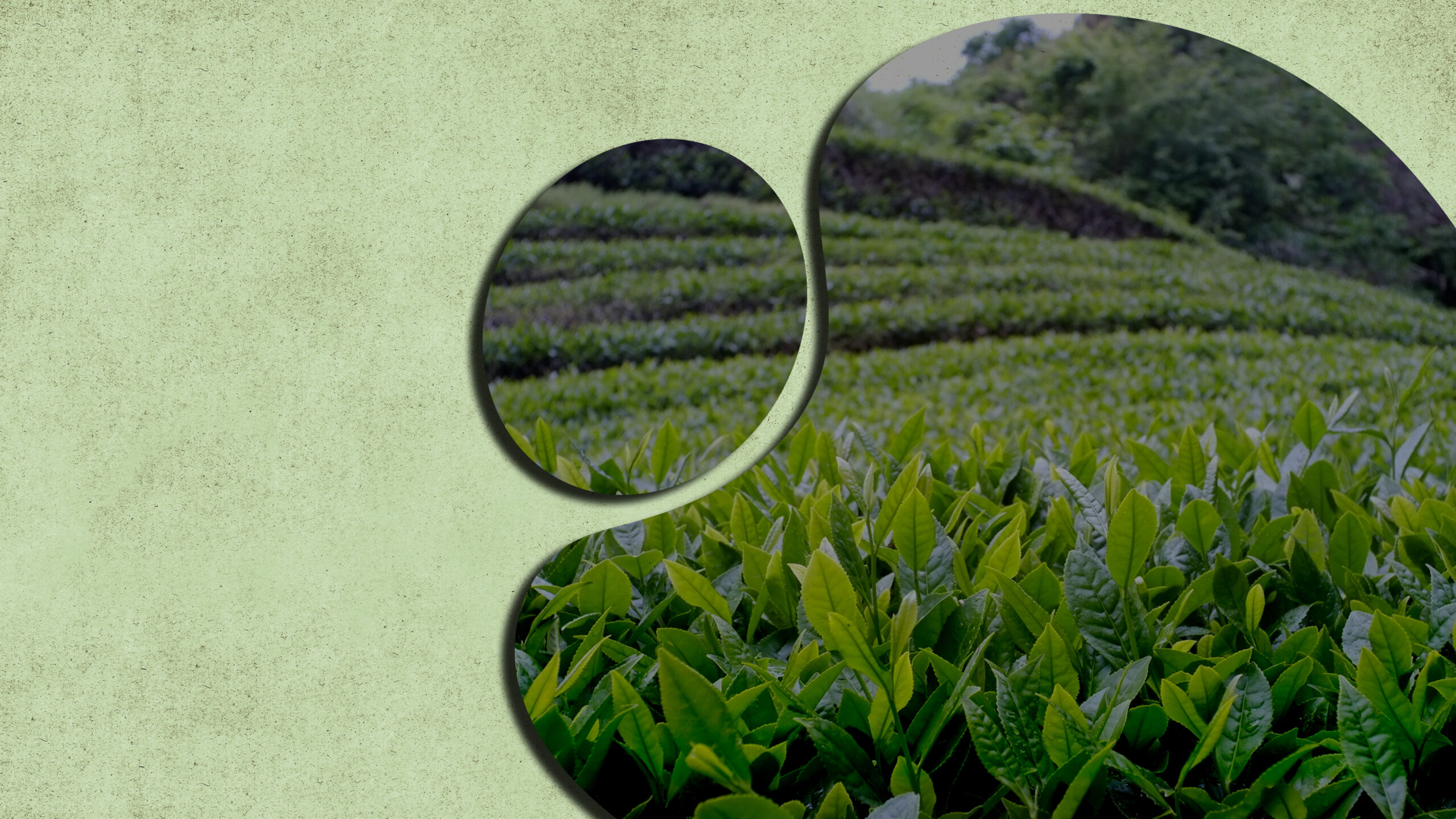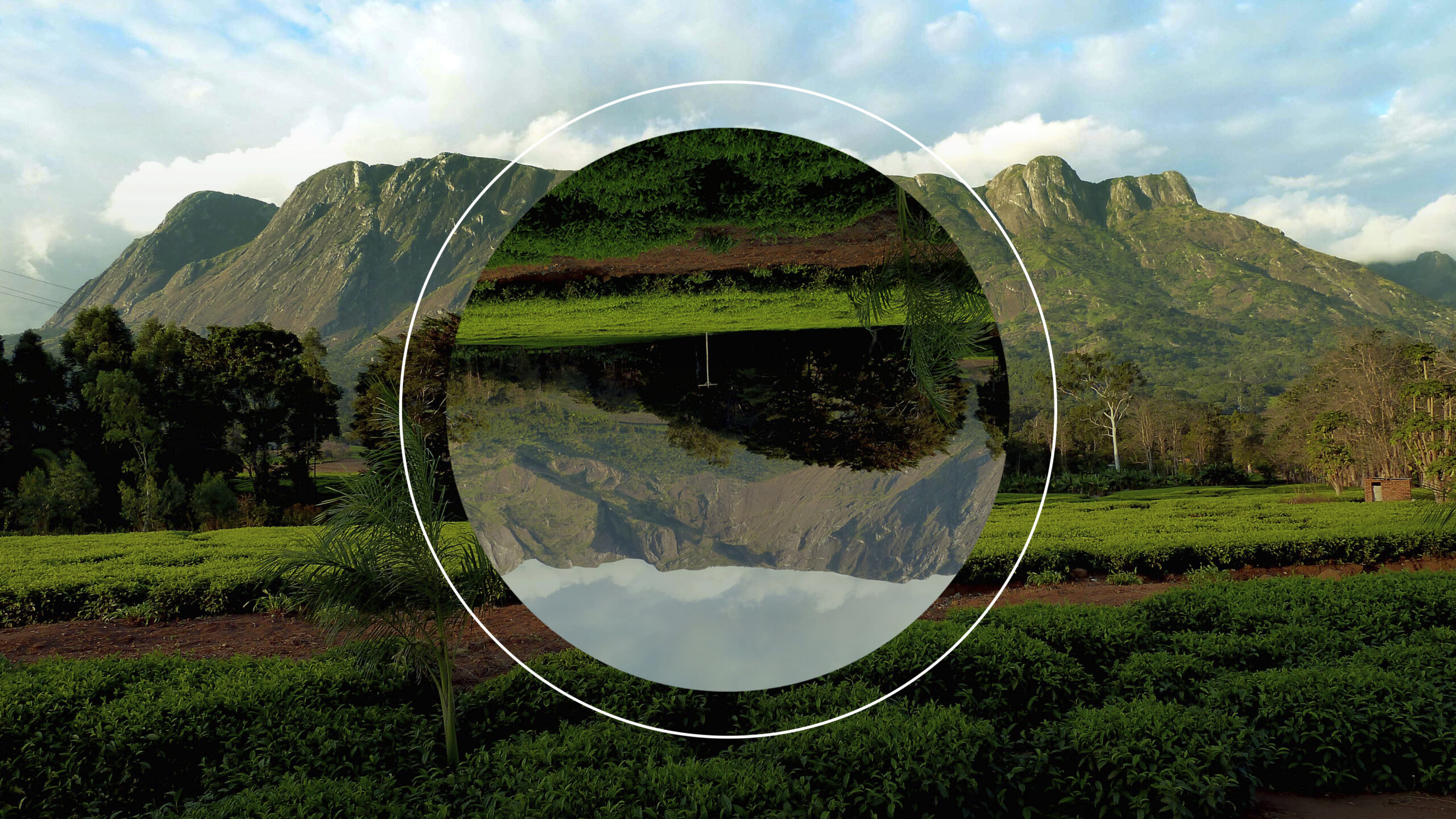CULTURE - YAO
Physical location
Yao’s are predominantly found in the southern parts of Malawi in districts of Zomba, Mangochi, Blantyre, Chiradzulu as well as in Mulanje. Most Yao’s live and work as fishermen due to their proximity to the lake and also some are involved in small scale businesses such as tailoring. These people are predominantly Islamic as they are believed to be the first people in Malawi to come into contact with Arab traders. There is a misconception that all Yao’s are muslims but this is not true, rather most yao’s are muslim would be a better acknowledgement. The Yao people speak a language which is known as Chiyao.
Brief History
The Yao people are believed to originate from northern Mozambique, in the mid 18th century. Mozambique has a mountain called Yao; it is treeless, and covered with grass, this is area is believed to be the exact place of their origin. Among the Yao’s themselves they are several groups which are; the Amasaninga, Amachinga, Achisi and Amangoche. They were named/they named themselves after the mountain which they lived close to, and also because the Yao believed it was at the mountain where spirits dwelled.
The Amasaninga; settled near Lisaninga hill (near Lutwisi river). This is the biggest group of the Yao people and it makes up for fifty percent of the Yao in Malawi.
The Amachinga; stayed near Mandimba hill, they were called Amasaninga because of the separated edge by which the hill is situated (Lucininga means “a fence”).
Achisi; settled at Mchisi hill; this is the smallest group of the Yao. All the groups migrated to the Malawi at different times and they settled among the Mang’anja and Nyanja people of southern Malawi.
The Yao myth of creation
In the beginning God was only living with the animals, before the existence of a man. During this time the chameleon was a fisher man; one day the chameleon went to check his fish trap however he found nothing. The next day when he went to check his trap again however was surprised to find the trap filled with eccentric creatures; they were humans, one man and one woman. The creatures asked if they can be set free. He decided to take the creatures to his neighbour “God” so as to get advice as what to do with the creatures. God told the chameleon not to kill the creatures, so that they should live to their maturity. God called all the animals to inform them about the creatures and this marked the first encounter of human beings and animals. The following day the male creature started twirling sticks and smoke started to gather. This caused fear to the animals and they warned man to be careful; however in the end fire was created. The grass thatched roof of God was set alight by the fire; chameleon managed to climb a tree, but God was very old he could not run, spider spun a web to rescue God. From that moment it is said that God said when humans die they shall join him in heaven and serve him as slaves.
The Yao leadership
In the Yao society they are two types of leadership, Islamic spiritual leadership “Sheikh” this does not mean that all Yao are Muslims and the chief “Mwenye” (Indian).
The Sheikh’s responsibilities are; to lead at funerals, lead at weddings, teach religious studies, and baptise the novices during initiation. The senior chief “Mwenye wamkulungwa” has his assistants known as the village headmen in charge of leading small areas within the village. The village headmen also have their assistants, who are known as the elders “Aputi” of the village. They are the counsellors to the chief and the village headmen.
The Yao chieftainship
The elder son to the eldest sister of the Chief or Village headman is the person who is heir to the throne. When the chief dies, the heir is enthroned after the funeral. On the day of enthronement guests from different villages are invited and food is prepared; roasted chicken and ugali (Nsima in Chewa) “food prepared from boiling the mixture of maize flour and water, until it’s a pulp”. The chief is advised not to break the bones; he should eat the meat only. The breaking of bones symbolises the breaking of the village, therefore as a chief he/she should not break the village, but rather unite it. The following day the leftovers and the bones are buried outside the village. On the day of enthronement the heir is asked to sit at the middle of the village while the elders shower him with the advice; how to stay with people and how to rule the people. During the night of the day of enthronement, the elders hit the heir on the forehead and the heir falls down to symbolise death. One of the elders then sprinkles flour onto the heir’s head and then lifts him up to symbolise the rebirth of the ancestors wisdom. This is called the ritual of death and rebirth. The heir is then declared as the chief, and the elders take the new chief and guide him around the village. Throughout the ceremony of enthronement the chief is advised not to have sex, so as to observe the ritual of “coolness”.
The Yao's rites of passage
The rites of passage are associated with the life cycle; childhood through adulthood to death. Birth rites: this rite is performed during the first pregnancy of a woman, this rite is called “Litiwo”. When a woman is about to deliver, the elderly women from her home village and elders from her husband’s village come together to join the pregnant woman. The elderly women help with domestic chores and they also offer advice; food taboos, sexual restrictions, restrictions from making contact with other people and the post natal care. The husband is also warned against the danger of adultery. If one or both parents broke the taboos, they are told that the unborn child may be born dead or blind.
The ceremony is in two phases; the first phase is the shaving of the novice whilst the second phase is the main Litiwo which usually takes place a week later after the shaving ceremony.
After the birth of the child, the mother and the child remain in-doors until the umbilical cord is cut; this period is called “kojesya likambaako”. After this period the child is introduced to the family and friends. This marks the end of the Litiwo. However the couple is advised to abstain from having sex for six months; if it is broken, they suffer from ndaka and kanyela (diseases associated with the breaking of taboos.)
Childhood rites of passage
Girl's rite of passage "Msondo"
This rite of passage occurs before puberty when the girl is around eight years old. The initiation is held in the village at the designated house, the house is fenced with grass; only the initiated girls and women can enter.
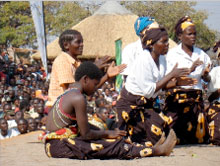
The aim of the initiation is to instruct the girls of the household duties, good manners, and to prepare them for their first menstruation. The novices “Wali” are taught through songs and they are encouraged to memorise the songs. The night they enter the house, the novices are accompanied by people dancing and singing. During this initiation, the girls are not circumcised and it only takes place for two weeks. After the two weeks period, they are released and they receive a new name symbolising a new status.
Boy's rite of passage "Jando"
It is the passage to adulthood. When a boy is aged between 8 and 13 he is allowed to undergo this rite of passage. It usually takes a month to allow the wounds of the novices to heal and it is usually held once a year. It starts with one parent whose boy is between the age of 8 and 13; they tell the village headman that their son is ready for initiation. The first boy to register is declared a leader for the other boys and is called “Achando”. The village headman calls all the parents/guardians whose sons have registered for initiation, this enable then to agree on a date for commencement as well as to agree on who will be the initiator “Nakanga”. Jando does not take place in the village; it usually takes place in the forest. They construct a small grass thatched house “Ndagala/simba”.
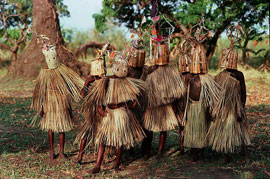
On the night of entering into Ndagala, it is accompanied by rituals and dances. The village headman performs the oblation to ask for protection from the ancestral spirits. He pours maize flour on a winnowing basket while calling out the names of ancestors. He also pours the flour on the foreskins of the novices as medication. The parents pay little sum of money to the village headman.
During the night Ngaliba (thus the chief initiator) puts charms in the Ndagala to protect it from the evil spirits. During the night of entering into the Ndagala, the boys are circumcised and it is accompanied by singing and beating of drums to obscure the parents from hearing the cries from their sons.
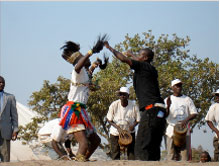
The novices are taught the moral values, sacred beliefs, importance of helping people, importance of respecting their elders, importance of being involved in funeral services, how to behave in marriage and the right way of conducting a sexual relationship. They are taught through songs, proverbial stories and riddles. They are also taught how to weave mats and how to carve agricultural tools.
When their wound heal, the initiator agrees the date of releasing the novices. Before the novices are released, they receive new names symbolising new status. The night before their release, they burn down the “dambwe” and that night is spent at the village headman’s house or any designated house. Early in the morning the boys are taken to the nearest river to take a bath and be baptized by the religious leader “Sheikh”. The boys wear new clothes and they return home with jubilation.
Funeral rites "Maliro"
The Yao funeral ceremony is more Islamic. When someone dies, the relatives inform the village headman as well as the distant relatives, prior to beginning mourning. The body is supposed to be buried within 24 hours. The sheikh blesses the body and the people prepare the body for burial; the body is washed and wrapped in a white cloth “Sanda”.
The grave is dug by the relatives and friends “Achiwilo” and sometimes it is dug by the grandsons of the deceased “Achasukulu”. The body is carried on a wooden pallet “Jenesa” and the body is buried with an ear facing the direction of Mecca. Women are not allowed to go to the graveyard “Malembe”.
The relatives of the deceased remain at the house for three days and on the third day they have a feast of dispersing “Kuwunjukula”. On this day the house is swept and everyone can go now home. After forty days the relatives and close friends meet again to show God that they continue love their deceased relatives. And this is done by organising a big feast called “Sadaka”.
Some of the Yao tradition dances
Dikhiri "Sikili"
This is an Islamic religious dance mainly danced by the Quadria Muslims and it is associated with Arabic lyrics. It is danced by both males and females. They stamp their feet on the ground energetically. It is performed during funerals and Islamic functions.
Beni
The dance was created by the ex-soldiers who were involved in the world war I and II. It is performed by men, women and children although the war only involved men.
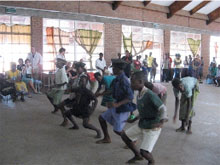
The performer’s dresses in military attire; they wear khaki shorts and/or trousers. They stand in rows; women separate from the women, the dancing that commences mimics soldiers. The musical instruments used are drums and whistles. The dance is strictly performed for entertainment.
Manganje
It is danced during the initiation ceremony; the night at which novices enter and/ or exit the initiation camp. It is danced by both males and females; they dance while going around each other. There is no specific costume for the dance.
M'bwisa
It is performed at night only and it is strictly for adults. The dance is performed during installation of the chief but presently m’bwisa is fading out. The dance is performed in pairs of males and females and they tie each other with a piece of cloth. The performers can choose a dancing partner either married or not married, the performers usually arrange who to dance with before the performance.
Likwata
It is performed by women only and it is performed during the child birth rites “Litiwo”. The songs of this dance mainly talk of how to take care of a baby and the importance of observing the taboos either, both food and sexual taboos. The dance can also be performed when a girl has been impregnated outside the marriage.
Chimtali
This dance is only performed by women only. The intention of the dance is to warn the boys and girls about their secret friendship/meetings. The dance is also performed for entertainment purposes.
